Tagged With ‘bergamot’
Tom Daxon
Laconia
2 July, 2018
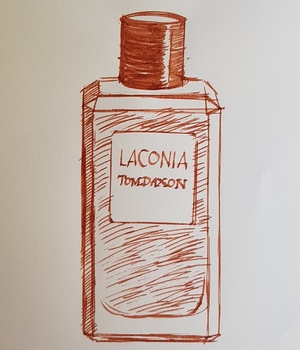 The Greek region of Laconia includes some of the most historic and spectacular parts of the Peloponnese, including the city of Sparta (the regional capital), the Mani peninsula and, on its eastern edge, the extraordinary presque-île of Monemvasia. Seen from the mainland, this huge rock – over 100 metres high, 300 metres wide and a kilometre long – towers over the sea that encloses it, surrounded by precipitous cliffs on every side. Connected to the shore by a narrow causeway, it makes a formidable natural fortress, and in the middle ages an important city grew up on its summit, connected to a small walled town on the narrow shelf at its base.
The Greek region of Laconia includes some of the most historic and spectacular parts of the Peloponnese, including the city of Sparta (the regional capital), the Mani peninsula and, on its eastern edge, the extraordinary presque-île of Monemvasia. Seen from the mainland, this huge rock – over 100 metres high, 300 metres wide and a kilometre long – towers over the sea that encloses it, surrounded by precipitous cliffs on every side. Connected to the shore by a narrow causeway, it makes a formidable natural fortress, and in the middle ages an important city grew up on its summit, connected to a small walled town on the narrow shelf at its base.
Lacking water and reliant on man-made cisterns cut into the rock, the city was gradually abandoned and today lies in romantic ruins, overgrown with scrub and difficult to explore. But the little town has been gradually restored, and now forms a car-free tourist haven. It was while staying at a luxury hotel here that British perfumer Tom Daxon found the inspiration for his latest scent, in the form of lemonade made with ice, local mint and honey and lemons grown on the hotel’s own estate. He’s named it after the region, which itself gave us the word ‘laconic’, apparently because Spartans were famously sparing with words.
Like me, Daxon is a fan of colognes, especially for the summer months, but he also feels that his customers want something that lasts longer than a few minutes on their skin. Citrus scents, refreshing though they may be, are notoriously short-lived, so the question was how to extend his new fragrance in an interesting way. His solution includes quite a long list of zingy and green ingredients, starting with lemon, yellow mandarin, orange and bergamot, followed by violet leaf, spearmint and clary sage, as well as ginger, cubeb, pink pepper and cardamom, all underpinned by vetiver and long-lasting synthetic musks.
The result is an attractive, fresh-smelling perfume with good staying power, though personally I’m willing to forego longevity in a cologne in favour of that all-important if all too short-lived blast of uplifting freshness – a laconic cologne, if you will. But when you’re paying £155 for 100ml, I can see the argument in favour of depth and development. I also admire the design of Daxon’s chunky, faceted bottles and smart monochrome packaging, which adds to the feeling of weight and lasting quality.
Elie Saab
Essence No 6: Vetiver
29 November, 2015
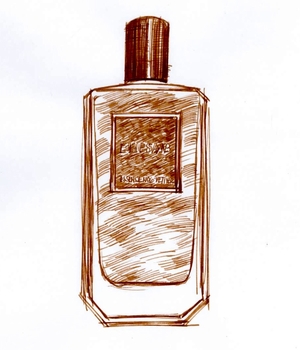 Is it just me, or would you be more impressed if a successful fashion designer decided not to do a perfume range than decided to do one? But there we are: perfume and fashion have gone together since the days of Paul Poiret, and you can’t blame Elie Saab from joining the crowd.
Is it just me, or would you be more impressed if a successful fashion designer decided not to do a perfume range than decided to do one? But there we are: perfume and fashion have gone together since the days of Paul Poiret, and you can’t blame Elie Saab from joining the crowd.
Actually perhaps that’s a bit unfair, as Saab’s new perfume, Essence No 6: Vetiver, is a really fine unisex fragrance, cleverly balancing the slightly damp earthiness of vetiver with the woody, floral scent of violet and herbal lavender.
There again maybe I shouldn’t have been surprised, as like all of Saab’s fragrances, Vetiver is the work of Francis Kurkdjian, who is now arguably the leading perfumer of his generation. French-born Kurkdjian sprang to fame at the age of 26 when he created Le Male for Jean-Paul Gaultier, and he has gone on to launch a stream of commercial hits, from Armani Mania to My Burberry. Yet he’s remained a highly creative perfumer, with his own excellently packaged Maison Francis Kurkdjian line.
In 2010 Saab signed a ten-year deal with Beauté Prestige International, one of the big perfume licensing companies (which in turn is owned by Shiseido), and the first Elie Saab perfume came out the following year. The Essences range was launched in August 2014, and Essence No6: Vetiver is the latest addition, along with Essence No7: Neroli (funnily enough there isn’t an Essence No5 in the range, presumably for Chanel-related reasons).
Vetiver has long been one of the most popular ingredients in perfumery, particularly in men’s perfumes. It’s not hard to understand why: the dried roots of this tropical grass have a wonderfully earthy, sexy, slightly bitter smell. You could probably use good-quality vetiver oil as a scent in its own right, but understandably enough, creative perfumers enjoy the challenge of combining it with other ingredients to bring out its specific qualities. In Guerlain’s classic Vétiver, for example, it’s combined with the lemony citrus smells you’d expect to find in a men’s cologne.
For Essence No6: Vetiver, perfumer Francis Kurkdjian has done something a bit different, by softening the earthy vetiver with the gentler, less abrasive scents of lavender, cloves, geranium and bergamot orange. Together they give Essence No6 a gentle touch of fruit, and even a hint of chocolate, though vetiver remains the star of the show. The result is deliciously rich and rounded, and you can really sense the quality of the ingredients. The chunky glass bottle, too, has an appealing weight to it, helped by the attractively unfussy, rather retro design, like a men’s after-shave from the 1930s. Perfect for wearing every day.
Hermès
Equipage Géranium
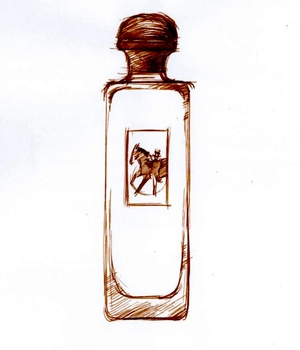 Equipage is such a classic perfume that it’s tempting to ask why anyone would mess with it, but that’s a bit like wondering why anyone would want to reinterpret the Beatles’ original version of Yesterday.
Equipage is such a classic perfume that it’s tempting to ask why anyone would mess with it, but that’s a bit like wondering why anyone would want to reinterpret the Beatles’ original version of Yesterday.
Created by the perfumer Guy Robert and launched in 1970, Equipage was the first Hermès perfume to be designed specifically for men, and Robert composed a rich, subtly spicy scent which includes – among many other things – bergamot orange, jasmine, lily of the valley and clove-scented carnations.
Forty-five years on, the company’s in-house perfumer, Jean-Claude Ellena, has revisited three of its classics, in each case pairing them with a new ingredient. First came Bel Ami Vétiver, followed by Rose Amazone, and now we have his updated version of Equipage – Equipage Géranium.
If Ellena’s attempt to give Equipage a modern twist isn’t (to my nose at least) entirely successful, his choice of geranium (or pelargonium, to be botanically correct) as a new ingredient is a typically clever and imaginative one. Though the leaves of different species of pelargonium smell of everything from lemon to cinnamon, most of the so-called geranium oil used in perfumery comes from a single South African species, Pelargonium graveolens. As with all natural ingredients, geranium oil comes in a range of different grades, but they generally share a fresh, slightly sharp smell that’s usually described as both fruity and minty, often with a hint of rose.
I’m guessing that it was the fresh, minty element of geranium oil that appealed to Jean-Claude Ellena, and Equipage Géranium does smell a tiny bit fresher and sharper than the original Equipage – but it’s a subtle twist rather than a radical reinvention. I’m not sure it’s sufficiently different to make it worth choosing over the original, but unlike many of Ellena’s perfumes, which are always refined but sometimes stripped down until they’re slightly colourless, Equipage Géranium retains all the richness and complexity of its inspiration. Given the crude simplicity of so many modern scents, that’s a quality to be celebrated.
Edition Perfumes
On the Road
26 November, 2015
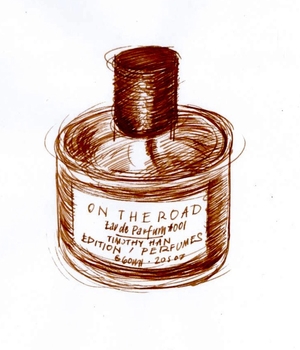 Since it was published in 1957, Jack Kerouac’s amphetamine-fuelled road-and-head-trip of a novel has inspired generations of would-be counter-culturalists to take off into the unknown, but until now, it has never inspired a perfume.
Since it was published in 1957, Jack Kerouac’s amphetamine-fuelled road-and-head-trip of a novel has inspired generations of would-be counter-culturalists to take off into the unknown, but until now, it has never inspired a perfume.
On the Road is only the second scent from East London-based Edition Perfumes, aka perfumer Timothy Han, but it follows in the literary footsteps of his first fragrance, She Came to Stay. Inspired by Simone de Beauvoir’s 1943 novel L’Invitée, She Came to Stay went on to be a best-seller for legendary London fashion boutique Browns.
Taking the plotline of Kerouac’s novel as its starting point, On the Road is one of those rare things in contemporary fragrance: a scent whose story unfolds on the skin – unlike so many recent perfumes, which continue to smell boringly identical from first spritz to final dreary gasp.
As Han describes his perfume, ‘it begins with smoky notes of benzoin and birch reminiscent of the hot asphalt and grittiness of New York City. Punctuated by forays into tobacco-filled bars where a new era in music is being defined by the jazz greats, our journey takes us through the openness of the dusty cornfields of a Mid-Western America and rises to the cedar forests of a Pacific Coast. The restlessness of the journey finally gives way to the optimism left by the fresh green fragrance of galbanum, citrus and bergamot.’
That is quite a lot to squeeze in to a 60ml bottle of perfume, but what we like about On the Road is that it really does develop in the hours after first spraying it on your wrist. Its initial burst of smoke and whisky gradually evolves into a very pleasing, long-lasting woody vetiver. It’s a fine piece of work, and all the more impressive given the quality of the design and packaging – though perhaps that’s less surprising once you learn that Han started his career as an assistant to John Galliano.
Though Han develops and makes his fragrances in his Dalston studio himself, he sees his work very much as a collaborative effort, and for On the Road he’s keen to mention hot young chefs Olia Hercules and Oliver Rowe, Hixter bartender James Randall and model Olivia Inge, without whom its launch, in Han’s words, ‘would have been a no-go’.
But perhaps the biggest shout should go out to the ebullient London artist Cedric Christie, whose photographs from a train trip he took from New Orleans to New York add an authentically On the Road-ish touch to the perfume boxes. Buyers get to choose from five different pictures, adding an extra layer of depth and desirability to the scent. All in all it’s a great launch, and I’m very much looking forward to Timothy Han’s next novel in a bottle.
Christian Dior
Jules
21 August, 2015
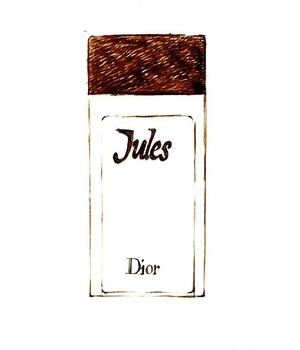 Sage isn’t everyone’s favourite herb, though turkey stuffing wouldn’t the same without it. It’s used less often in perfumery than in cooking, but Jules shows what a great ingredient it can be in the hands of a brilliant perfumer.
Sage isn’t everyone’s favourite herb, though turkey stuffing wouldn’t the same without it. It’s used less often in perfumery than in cooking, but Jules shows what a great ingredient it can be in the hands of a brilliant perfumer.
The ‘nose’ in this case was Jean Martel, who worked for the French fragrance company Givaudan in the 1970s and 1980s and deserves to be far better known, not least because he also created that 1970s classic, Paco Rabanne for Men.
Jules was launched in 1980, with a brilliant advertising campaign featuring posters by René Gruau, arguably the greatest fashion illustrator of the last century, which helped the first bottles sell out in record time. Martel combined sage (which has a slightly catty smell) with cedar and other things like wormwood, lavender and bergamot. To me the result smells like sage and slightly peppery leather, though there’s a long list of other ingredients, including cumin, sandalwood, oakmoss, jasmine, musk and rose.
Despite its initial success, Jules has since been overshadowed by the success of Kouros, which was launched the following year. Created for Yves Saint Laurent by the brilliant Pierre (Cool Water) Bourdon, Kouros shares Jules’ clean / dirty / sexy character, and both scents belong to the same fragrance ‘family’, the fougères – a style of perfumes, usually aimed at men, based on a combination of lavender and coumarin (originally derived from tonka beans but usually synthesised).
Of course, Kouros’ ongoing popularity may be because it’s inherently superior to Jules, but actually I think it’s more to do with the fact that over the years Kouros has benefited from regular advertising, while Dior seems to have forgotten that Jules ever existed, which I think is a terrible shame.
To make matters worse, while you can buy Kouros pretty much anywhere, Jules has become ridiculously hard to find: I don’t know anywhere in the UK that sells it, and even in Paris the only place that seems to stock it is the department store Bon Marché, though you can buy it from Dior’s French website. Given Dior’s apparent lack of interest, it’s a wonder it hasn’t been discontinued, but I’m glad it’s still on sale, even if it’s now a rarity.
I can only hope that one day they decide to invest in promoting it again and making it available to all – but in the meantime if you want something special that very few other people will have, get over to Bon Marché.
Chanel
Pour Monsieur
7 July, 2015
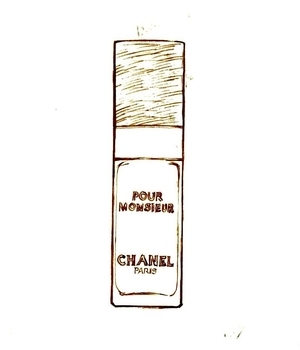 I’ve loved Pour Monsieur for decades now, so it was a bit of a surprise when I realised that I hadn’t reviewed it up till now. But actually I think that tells you something about the fragrance itself, which is so discreet that it’s all too easy to overlook – and that’s a real shame, because it’s a wonderful thing.
I’ve loved Pour Monsieur for decades now, so it was a bit of a surprise when I realised that I hadn’t reviewed it up till now. But actually I think that tells you something about the fragrance itself, which is so discreet that it’s all too easy to overlook – and that’s a real shame, because it’s a wonderful thing.
Pour Monsieur smells softly spicy when you first spray it on, but soon you also start smelling its mossy, herbaceous base. The spiciness comes partly from cardamom, and the woodiness is a mixture of oakmoss (actually a type of fragrant lichen) with tiny amounts of cedarwood, resinous labdanum (a kind of cistus) and earthy vetiver.
Chanel’s first modern men’s fragrance, it was conjured up by the perfumer Henri Robert and launched in 1955. Robert, who was born in 1899 and died in 1987, took over at Chanel after the retirement of the legendary Ernest Beaux, and went on to launch Chanel No19 in 1970 and Cristalle in 1974.
Pour Monsieur is one of the best examples of the perfume style or ‘family’ known as chypre, which derives from the French for Cyprus (the island rather than the tree), presumably inspired by the scent of Mediterranean herbs and shrubs baking in the sun. The basic combination – first popularised by François Coty in a 1917 perfume of the same name – combines bergamot, oakmoss and labdanum.
There have been endless variations on the theme since, but few of them match Pour Monsieur for sheer class; even its packaging is beautifully cool. Though it’s not an expensive perfume, it is redolent of luxury in its quiet complexity, like the deceptively simple face of a Patek Philippe watch. This is insider luxury, if you like, which is all about discretion and restraint rather than ostentation and excess.
The upside – in a perfume or a Patek Philippe – is that not everyone will recognise what you’re wearing. And while Pour Monsieur lasts a long time on the skin, it’s one of those fragrances that doesn’t carry far, so if you’re looking to impress it probably isn’t for you. But if wearing something wonderful makes you feel more self-confident and assured, then I can think of few better perfumes to buy.
Ermenegildo Zegna
Javanese Patchouli
4 July, 2015
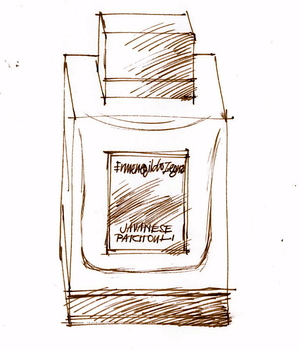
Patchouli – a tropical plant in the mint family – has been used as a perfume for centuries. The story goes that it was introduced to the West by Chinese and Indian traders, who used its leaves in bundles of silk as a moth repellent. The perfume oil is extracted from the leaves of several closely related species belonging to the Pogostemon family, which are grown commercially across Asia and West Africa.
For many people the scent remains indelibly associated with the hippy era, when miasmatic waves of cheap patchouli oil belched forth from bong shops and student campuses across the Western world.
But while there’s still cheap patchouli around (try visiting Camden Market over a sweaty weekend), the highest quality oils have a completely different character. Light rather than heavy, fresh rather than sweaty, top-notch patchouli is a refined, delicious fragrance, working equally well on its own or in combination with other perfume ingredients – which is why it’s so widely used in perfumery still.
There aren’t, though, that many really classy men’s perfumes in which patchouli is the dominant scent – I guess because perfume companies feel that those unfortunate hippy associations are still too strong. Givenchy Gentleman used to be a fine men’s example, but sadly it has been reformulated in recent years and isn’t a patch on its previous incarnation, so it’s been great to discover Javanese Patchouli, from the smart Italian business-suit brand Ermenegildo Zegna.
Javanese Patchouli is one of six ‘premium’ perfumes in Zegna’s ‘Essenze’ collection, which was launched in 2012. Each of the perfumes is built around a single scent, sourced from a single country or region: apart from Javanese Patchouli there’s Haitian Vetiver, Italian Bergamot, Indonesian Oud, Sicilian Mandarin and Florentine Iris.
Each 125ml bottle in the Essenze range currently (in mid-2014) costs £140, so they’re certainly not cheap; by comparison a 100ml bottle of Zegna’s Uomo scent costs £60, less than half as much. But – and I hope by now I don’t automatically associate quality with price – the two I’ve tried so far do feel luxurious and refined.
Javanese Patchouli smells, to me, like nothing else, in the sense that all I smell is patchouli, of the highest quality. Given that it’s such a lovely, gentle smell that’s absolutely fine with me, though apparently its ingredients also include soft, faintly chocolatey tonka bean, cedar wood, bergamot and pink pepper. I can’t smell any of those, but perhaps my nose is simply not sensitive enough; if they help make this perfume smell as good as it does, though, I’m perfectly happy that they’re there. I only wish I knew who the perfumer was so I could congratulate her or him.
The bottle (which after all is part of what you’re buying) is well made too, in heavy glass with a black magnetic cap that clonks satisfyingly in place, like the door of an expensive limousine. It’s not, perhaps, quite as sophisticated a design as comparable ‘premium’ perfumes from Dior or Chanel, but at least it’s not hideous or tacky, which all too many contemporary perfume bottles are. And the box it comes in conceals some rather clever cardboard technology, which locks the bottle snugly into place in an oddly pleasing way.
My only criticism, I suppose, is that I can’t smell it on my skin for very long. I was going to say that’s a bit of a swizz, since for £140 you’d hope to get something that didn’t disappear so fast, but I’m told that other people can smell it hours after I can, so at least someone else will get the benefit of your investment.
Knize
Knize Ten
8 May, 2015
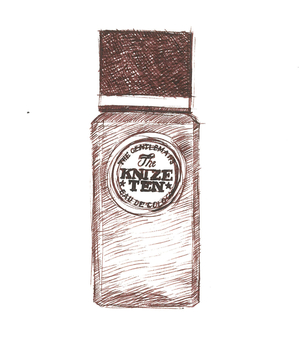
The year 1924 was a great one for perfume, if only because it saw the launch of both Chanel’s sumptuous Cuir de Russie and this, the wonderful Knize Ten. That both have survived into the present day is a bit of a miracle, but though they’re both usually placed in the ‘leather’ category of fragrances, they could hardly be less similar.
Cuir de Russie is a wonderfully rich and complex perfume, but its oddly androgynous combination of smoke and leather with a heavy floral note can make it rather difficult to wear. Knize Ten is a much more immediately appealing, fresher-smelling scent, and its leatheriness is tempered with the kind of zesty and herbal ingredients you’d expect to find in a classic eau-de-cologne – things like bergamot, lemon and geranium.
These gradually fade away on the skin, leaving a lovely, long-lasting but not overpowering leathery scent, less smoky than it is sweet. To me it also has a strong whiff of heliotrope – those electric-blue park bedding plants whose cherry-pie scent can be so intoxicating on a hot still high-summer’s day – but others may detect more than a hint (if I remember it right) of Plasticine; not unpleasant in itself, but enough to add a touch of childhood to the mix.
If Cuir de Russie is a testament to the genius of Ernest Beaux (whose greatest triumph was Chanel No 5), then Knize Ten is a fitting monument to François Coty (the mass-market perfume pioneer) and his brilliant technical director, Vincent Roubert (who had previously worked with Ernest Beaux in Grasse, then the perfume capital of France). It was commissioned, rather unusually, by a bespoke men’s tailoring company from Vienna, Knize, whose boutique is still going strong today. I’d wondered whether Knize Ten was the sole survivor of nine other fragrances, but it turns out that the name was dreamed up by their advertising director of the time, who beat Ralph Lauren by at least 50 years by seeking to associate the company with the aristocratic imagery of polo: the name ‘Ten’ was chosen to reflect the highest handicap in the game.
I love everything about Knize Ten: not just its instantly appealing smell but the smart glass bottle, with its crisply bevelled corners and chunky black cube of a cap. I’ve read somewhere that, like the company’s Viennese store, it was designed by the legendary Austrian architect Adolf Loos, and although that seems like wishful thinking it could be true; Loos designed further shops for Knize in Paris and Berlin, so their association was obviously close, and the dates look perfectly plausible too.
Even the typography of the label – a bold slab serif in a Victorian playbill style – is punchy and confident, just like the perfume inside. And while it’s far less widely available than it deserves to be, it’s not even that expensive by contemporary standards: what’s not to like?
Slugs and snails and puppy-dogs’ tails
23 April, 2015
A while back I attended a perfume training day with Roja Dove, perfumer extraordinaire in several senses of the word. A small group of us smelled something like a hundred different perfume ingredients, from bergamot to tuberose (the pure extract of which smells far more refined than any of the so-called ‘tuberose’ perfumes I’ve sampled).
Lots of surprises: extract of daffodil smells like hay; galbanum like freshly-podded peas. Fine lavender oil has an oddly sweaty side to it, which I think is one of the things I smell in Guerlain’s legendary Jicky. Roja brings in beaver glands, which gave us the wonderful leathery smell of castoreum (used in Chanel’s Cuir de Russie), and the greasy scrapings from the Ethiopian civet cat, which has the farmyard reek of fresh cow-pats but – in minute quantities – adds a disquieting hint of sex to any perfume in which it (or its synthetic equivalent) is used.
It was a fascinating and really useful day, though it must take daily practise to memorise so many ingredients. What surprised me, though, was the imprecision of perfume terminology. Particularly extracts come from very specific sources: galbanum, for example, derives from the roots of particular species of Iranian fennel (Ferrula gummosa and Ferrula rubricaulis), yet in our training day it was vaguely described as coming from ‘an umbellifer root’. Given that there are over 3,700 individual species in the umbellifer family (now renamed the Apiaceae), that wasn’t much help – cow-parsley is an umbellifer too, but I bet its roots don’t smell like fresh peas.
And as for daffodil smelling like hay, I wanted to know which daffodil: there are between 30 and 70 species of narcissus (the Latin term for daffodil) and hundreds and hundreds of varieties, many of which smell very different from each other.
It struck me as an odd contrast between how incredibly precise perfume chemists have to be, describing specific fragrances down to the molecular level, and yet how imprecise so much perfume terminology seems to be at the same time. If perfumers themselves use such vague descriptions, is it any wonder that we, the perfume-buying public, find the subject so confusing and so hard to understand?
Geoffrey Beene
Grey Flannel
23 February, 2015
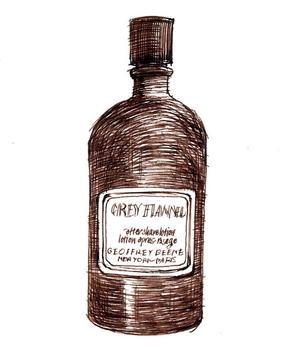 The American fashion designer Geoffrey Beene died of cancer in 2004, but Grey Flannel, the perfume he commissioned from the French fragrance company Roure in the mid-1970s, lives on, and that’s something to be grateful for, as it’s a very appealing scent – even in its current, cheaper incarnation.
The American fashion designer Geoffrey Beene died of cancer in 2004, but Grey Flannel, the perfume he commissioned from the French fragrance company Roure in the mid-1970s, lives on, and that’s something to be grateful for, as it’s a very appealing scent – even in its current, cheaper incarnation.
Created by an otherwise little-known perfumer named André Fromentin, Grey Flannel was launched in 1975 (or 1976, depending on which perfume authority you believe; I’m often surprised how much confusion there seems to be around recent perfume history). Grey flannel was Geoffrey Beene’s signature material, but fortunately that’s not what his first men’s perfume smells of.
In fact Grey Flannel smells of violets, which seems like a weirdly feminine thing to choose for men, yet the clever thing about violets – or to be more precise, about violet leaves – is that as well as smelling sweet they also have a certain woodiness, which makes their scent far less girly than, say, lily-of-the-valley or rose.
Fromentin’s skill was to take this violet-leaf fragrance (which was successfully synthesised in the early 20th century) and mix it with fresh-smelling ingredients such as galbanum (which smells like green pea-pods) and bergamot (one of the most important citrusy components of the classic men’s eau-de-cologne), but also with typical ‘masculine’ woody smells such as oakmoss (actually a kind of lichen), cedar and vetiver.
The result is a deep, rich perfume that combines sweetness and woodiness in equal measure: it’s too sweet for some, but I love it, even though it’s been reformulated in recent years, presumably with cheaper ingredients – though for once at least some of the savings have been passed on to us, the customers, for Grey Flannel is one of the best-value perfumes you can buy.